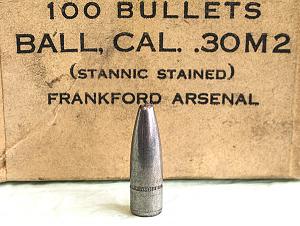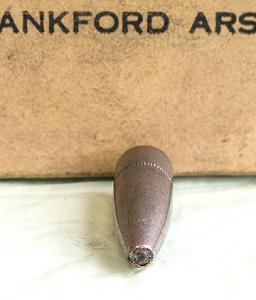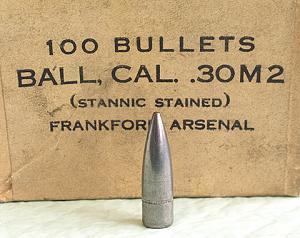I recently purchased an assortment of ammo, cases and bullets. This included two boxes that appeared to be military and contained "Stannic Stained" bullets.
In addition, one set of bullets has an odd tip configuration or insert. These are non-magnetic and weigh 147 grains:


The other set contained bullets that weigh 150 grains:

My questions are:
1. Are these actually USGI bullets?
2. Does anyone know what the odd nose configuration is for?
3. What is the purpose of the stannic staining?
Thank you,
Richard

|
   
   
|
|



 Reply With Quote
Reply With Quote
















